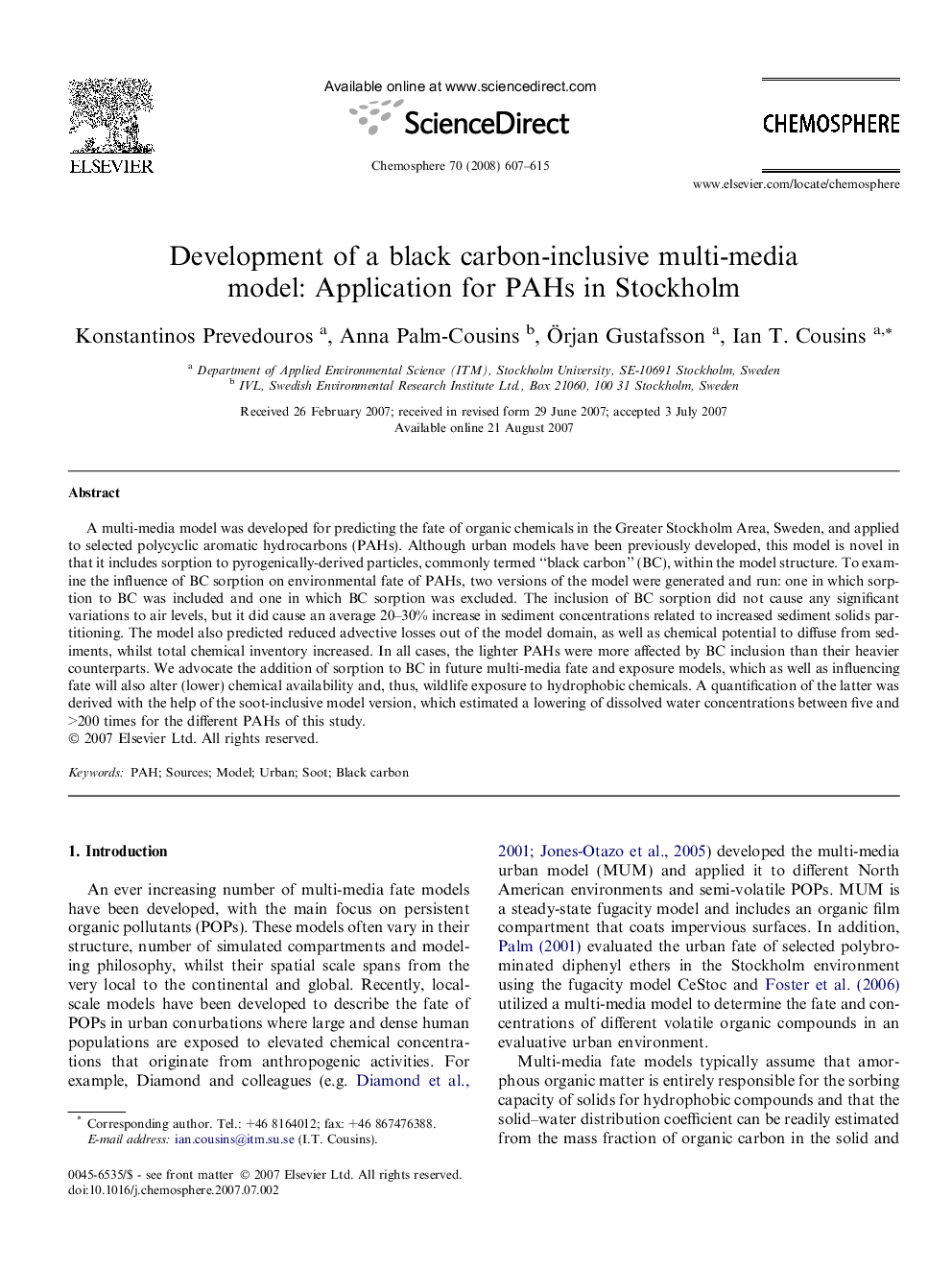| Article ID | Journal | Published Year | Pages | File Type |
|---|---|---|---|---|
| 4414423 | Chemosphere | 2008 | 9 Pages |
A multi-media model was developed for predicting the fate of organic chemicals in the Greater Stockholm Area, Sweden, and applied to selected polycyclic aromatic hydrocarbons (PAHs). Although urban models have been previously developed, this model is novel in that it includes sorption to pyrogenically-derived particles, commonly termed “black carbon” (BC), within the model structure. To examine the influence of BC sorption on environmental fate of PAHs, two versions of the model were generated and run: one in which sorption to BC was included and one in which BC sorption was excluded. The inclusion of BC sorption did not cause any significant variations to air levels, but it did cause an average 20–30% increase in sediment concentrations related to increased sediment solids partitioning. The model also predicted reduced advective losses out of the model domain, as well as chemical potential to diffuse from sediments, whilst total chemical inventory increased. In all cases, the lighter PAHs were more affected by BC inclusion than their heavier counterparts. We advocate the addition of sorption to BC in future multi-media fate and exposure models, which as well as influencing fate will also alter (lower) chemical availability and, thus, wildlife exposure to hydrophobic chemicals. A quantification of the latter was derived with the help of the soot-inclusive model version, which estimated a lowering of dissolved water concentrations between five and >200 times for the different PAHs of this study.
